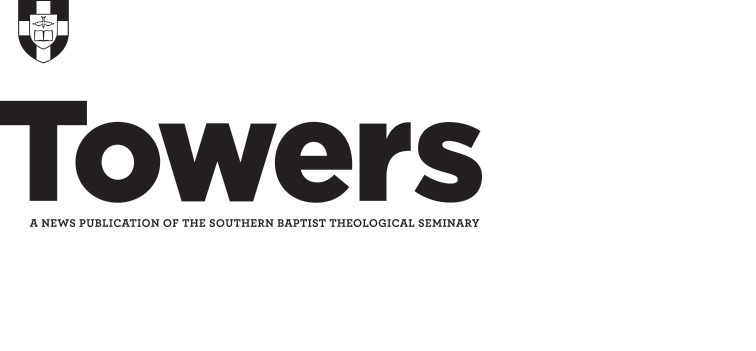Southern Seminary founder John A. Broadus was a vocal proponent of bodily health and discipline within the seminary community, even recommending muscular exercise to preachers in his influential book The Preparation and Delivery of Sermons (1870).1 During his tenure as seminary president, Broadus believed so strongly in the value of physical exercise for ministers that he designated two students to lead daily instructions in gymnastics throughout the year.2
The seminary’s first serialized magazine periodically featured articles mindful of a student’s physical fitness. Thomas W. Young, a student, wrote a satirical piece for an 1889 issue titled “Students Should Not Take Exercise.” Taking aim at what he perceived as a trend of overzealousness toward academic study at the expense of physical health, Young mused “too close conferment to the study may cause you to become pale and amaciated (sic.) and troubled, doubtless, with dyspepsia, but these are no hindrances to your usefulness, besides they are indications of being a hard student.”3
The Seminary Magazine gave occasional consideration to good diet as well as exercise. Dudley S. Reynolds, M.D., penned a more sober-minded article for an 1892 issue, recommending dietary prudence.4 He warned against the ill-effects to the liver and kidneys due to consumption of “insoluble foods” such as the skins of potatoes, apples, and other yeast-abundant fruits.
In 1903, the Magazine ran a more jovial editorial on the subject entitled “Gastronomics,” courtesy of student John Roach Straton, who later became famous nationally as a preacher and moral crusader. The future evangelist asserted that “many a poor sermon is the net result of too much fried chicken and too large slices of ham for breakfast!” Turning his attention to the seminary’s dining hall, Straton continued:
Brethren, is not the manner of our eating in the Hall entirely too gay? This is a fast age, but the age would have to quicken its pace to catch up with the clipper gait at which we dispose a meal in the Hall. . . . The manner in which we bolt a half-hour meal in ten minutes is likely to cause dyspeptic preachers, which in turn is calculated to cause dyspeptic preaching, which is in turn is very bad—is awful!5
In 1897, the seminary dedicated its Levering Gymnasium at the downtown campus at the intersection of Fifth and Broadway, an occasion that would have surely delighted Broadus had he lived to witness it. Funding for the gymnasium came primarily through a $10,000 gift of trustee board president Joshua Levering. As 19th century Americans became more urbanized, city-dwellers increasingly recognized the importance of gymnasiums to promote a culture of bodily health. Publications from that era provided instructions on stretch drills and moderate weight lifting, but the instructions on using apparatus such as balance bars, suspended rings, and vaulting bars might be considered too specialized for the average contemporary workout.6 A marvelous photograph dated around 1912 evidences the fact that Southern Seminary students were sufficiently able-bodied to implement handstands and precise balancing drills into their gymnasium routines.
The seminary built a second Levering Gymnasium for the current campus in 1929, and for many decades the gym served as the go-to-place for the seminary’s physical fitness conditioning and extracurricular activities. After the construction of the Honeycutt Campus Center in the 1990s, the Levering Gym remained accessible but as a supplement to the Health and Recreation Center. Levering’s legacy will continue to endure through a planned refitting of the gymnasium to host the SBTS CrossFit program.
More resources on SBTS history can be accessed through the Archives and Special Collections in the James P. Boyce Centennial Library.
FOOTNOTES
1John A. Broadus, A Treatise on the Preparation and Delivery of Sermons (New York: A. C. Armstrong, 1894), 452-58.
2Catalogue of the Southern Baptist Theological Seminary, 1891-92 (Louisville: Baptist Book Concern, 1892), 2.
3Thos. W. Young, “Students Should Not Take Exercise,” The Seminary Magazine, March 1889, 83.
4Dudley S. Reynolds, “Disturbances –Physical and Mental Development,” The Seminary Magazine, February 1892, 250.
5John Roach Straton, “Gastronomics,” The Seminary Magazine, March 1903, 248.
6Classified Gymnasium Exercises of System of R. J. Roberts with Notes (Springfield, MA: W. F. Adams, 1890). James Madison Watson, Hand-book of Calisthenics and Gymnastics: A Complete Drill-Book for Schools, Families, and Gymnasiums (New York: Schermerhorn, Bancroft, and Co., 1864).




